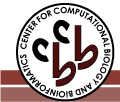| General information | | DisProt: | DP00211 | | Name: | Insulin-like growth factor-binding protein 6 | | Synonym(s): | IBP6_HUMAN
IGF-binding protein 6
IGFBP-6
IBP-6
| | First appeared in release: | Release 2.1 (03/14/2005) | | UniProt: | P24592 | | UniGene: | Hs.274313 | | SwissProt: | IBP6_HUMAN | | TrEMBL: | | | NCBI (GI): | 124068 | | Source organism: | Homo sapiens (Human) | | Sequence length: | 240 | | Percent disordered: | 14% | | Homologues: | |
| Native sequence |
10 20 30 40 50 60
| | | | | |
MTPHRLLPPL LLLLALLLAA SPGGALARCP GCGQGVQAGC PGGCVEEEDG GSPAEGCAEA - 60
EGCLRREGQE CGVYTPNCAP GLQCHPPKDD EAPLRALLLG RGRCLPARAP AVAEENPKES - 120
KPQAGTARPQ DVNRRDQQRN PGTSTTPSQP NSAGVQDTEM GPCRRHLDSV LQQLQTEVYR - 180
GAQTLYVPNC DHRGFYRKRQ CRSSQGQRRG PCWCVDRMGK SLPGSPDGNG SSSCPTGSSG - 240
|
| Functional narrative |
Insulin-like growth factors (IGF-I and -II) are widely expressed polypeptides that promote cell proliferation, differentiation and survival by endocrine, paracrine and autocrine mechanisms. The IGF system is the major control pathway of physiological growth in mammals. IGF actions are finely regulated by a family of six high-affinity IGF binding proteins (IGFBPs 1-6). These IGF-binding proteins prolong the half-life of the IGFs and have been shown to either inhibit or stimulate the growth promoting effects of the IGFs on cell culture. They alter the interaction of IGFs with their cell surface receptors. IGFBP-6 differs functionally from other IGFBPs in binding IGF-II with 20-100 fold higher affinity than IGF-I, whereas IGFBPs 1-5 do not have a marked IGF binding preference. IGFBPs consist of three domains of approximately equal size, with both the N- and C-domains of IGFBPs being implicated in high-affinity IGF binding.
|
| Map of ordered and disordered regions |


Note: 'Mouse' over a region to see the start and stop residues. Click on a region to see detailed information.
|
| Region 1 | | Type: | Disordered - Extended | | Name: | Loop | | Location: | 177 - 184 | | Length: | 8 | | Region sequence: |
EVYRGAQT | | Modification type: | Fragment
Native
| | PDB: | 1RMJ:A | | Structural/functional type: | Relationship to function unknown
| | Functional classes: | Unknown
| | Functional subclasses: | Unknown
| Detection methods:
- Nuclear magnetic resonance (NMR) (298 K; pH: 4.5; D2O 5 %; H2O 95 %; sodium acetate 10 mM; sodium azide 0.02 %)
| References:
- Headey SJ, Keizer DW, Yao S, Brasier G, Kantharidis P, Bach LA, Norton RS. "C-terminal domain of insulin-like growth factor (IGF) binding protein-6: structure and interaction with IGF-II." Mol Endocrinol. 2004; 18(11): 2740-2750. PubMed: 15308688
| Comments:
|
| Region 2 | | Type: | Disordered - Extended | | Name: | Loop | | Location: | 205 - 211 | | Length: | 7 | | Region sequence: |
QGQRRGP | | Modification type: | Fragment
Native
| | PDB: | 1RMJ:A | | Structural/functional type: | Relationship to function unknown
| | Functional classes: | Unknown
| | Functional subclasses: | Unknown
| Detection methods:
- Nuclear magnetic resonance (NMR) (298 K; pH: 4.5; D2O 5 %; H2O 95 %; sodium acetate 10 mM; sodium azide 0.02 %)
| References:
- Headey SJ, Keizer DW, Yao S, Brasier G, Kantharidis P, Bach LA, Norton RS. "C-terminal domain of insulin-like growth factor (IGF) binding protein-6: structure and interaction with IGF-II." Mol Endocrinol. 2004; 18(11): 2740-2750. PubMed: 15308688
| Comments:
|
| Region 3 | | Type: | Disordered - Extended | | Name: | | | Location: | 223 - 240 | | Length: | 18 | | Region sequence: |
PGSPDGNGSSSCPTGSSG | | Modification type: | Fragment
Native
| | PDB: | 1RMJ:A | | Structural/functional type: | Relationship to function unknown
| | Functional classes: | Unknown
| | Functional subclasses: | Unknown
| Detection methods:
- Nuclear magnetic resonance (NMR) (298 K; pH: 4.5; D2O 5 %; H2O 95 %; sodium acetate 10 mM; sodium azide 0.02 %)
| References:
- Headey SJ, Keizer DW, Yao S, Brasier G, Kantharidis P, Bach LA, Norton RS. "C-terminal domain of insulin-like growth factor (IGF) binding protein-6: structure and interaction with IGF-II." Mol Endocrinol. 2004; 18(11): 2740-2750. PubMed: 15308688
| Comments:
|
| Comments |
The experimental fragment was the C-terminal domain of human IGFHB-6.
|
| If you have any comments or wish to provide additional references to this protein or its disordered region(s), please click here to e-mail us. |
Disprot-footer
|










